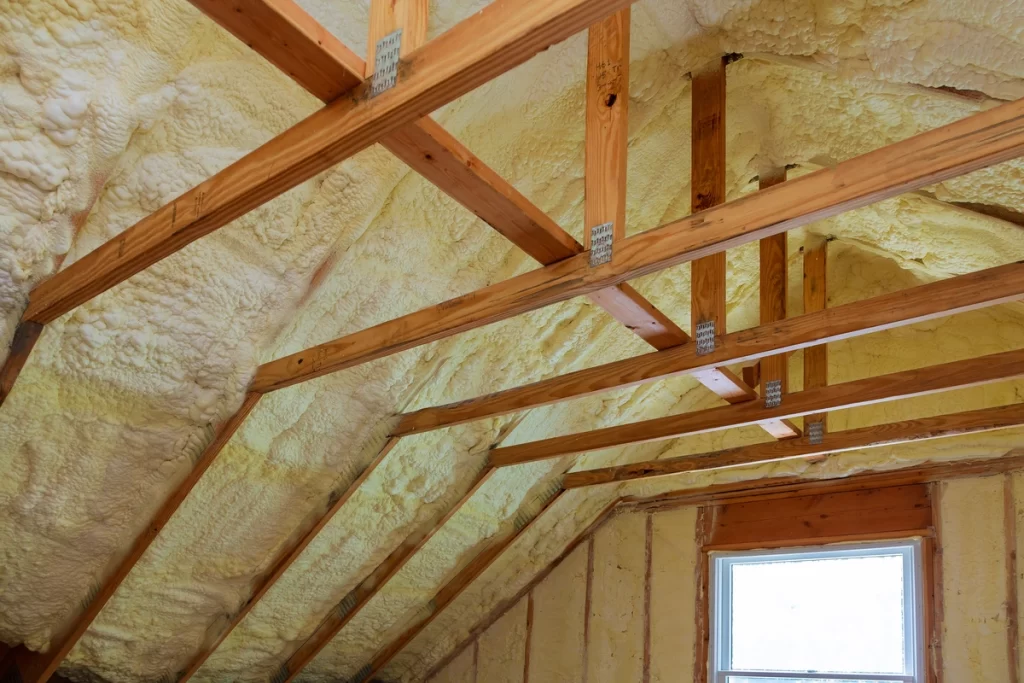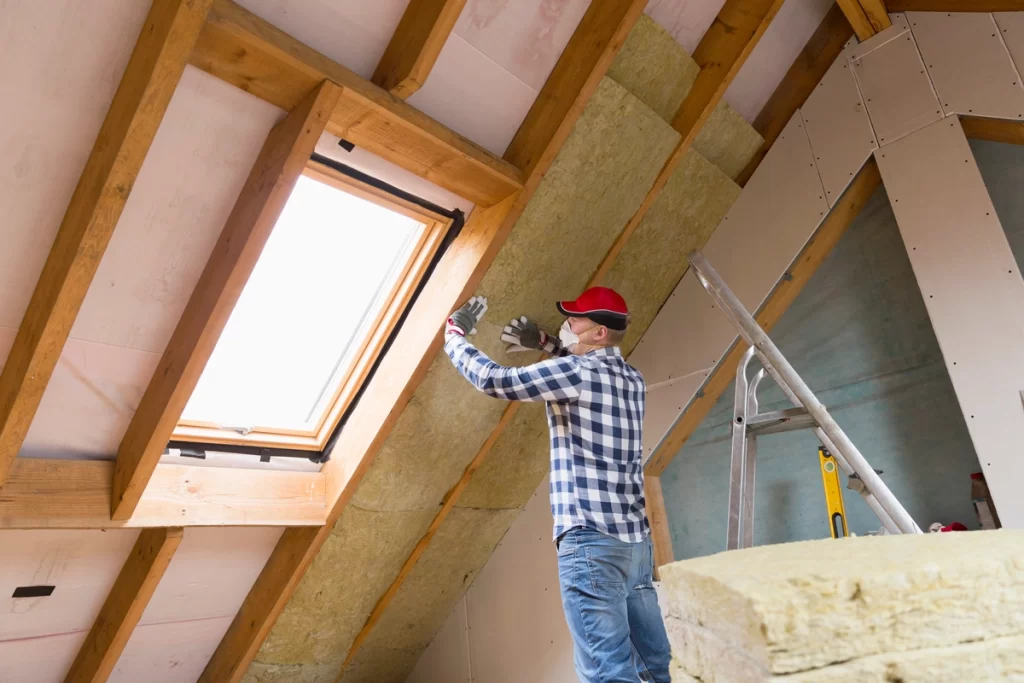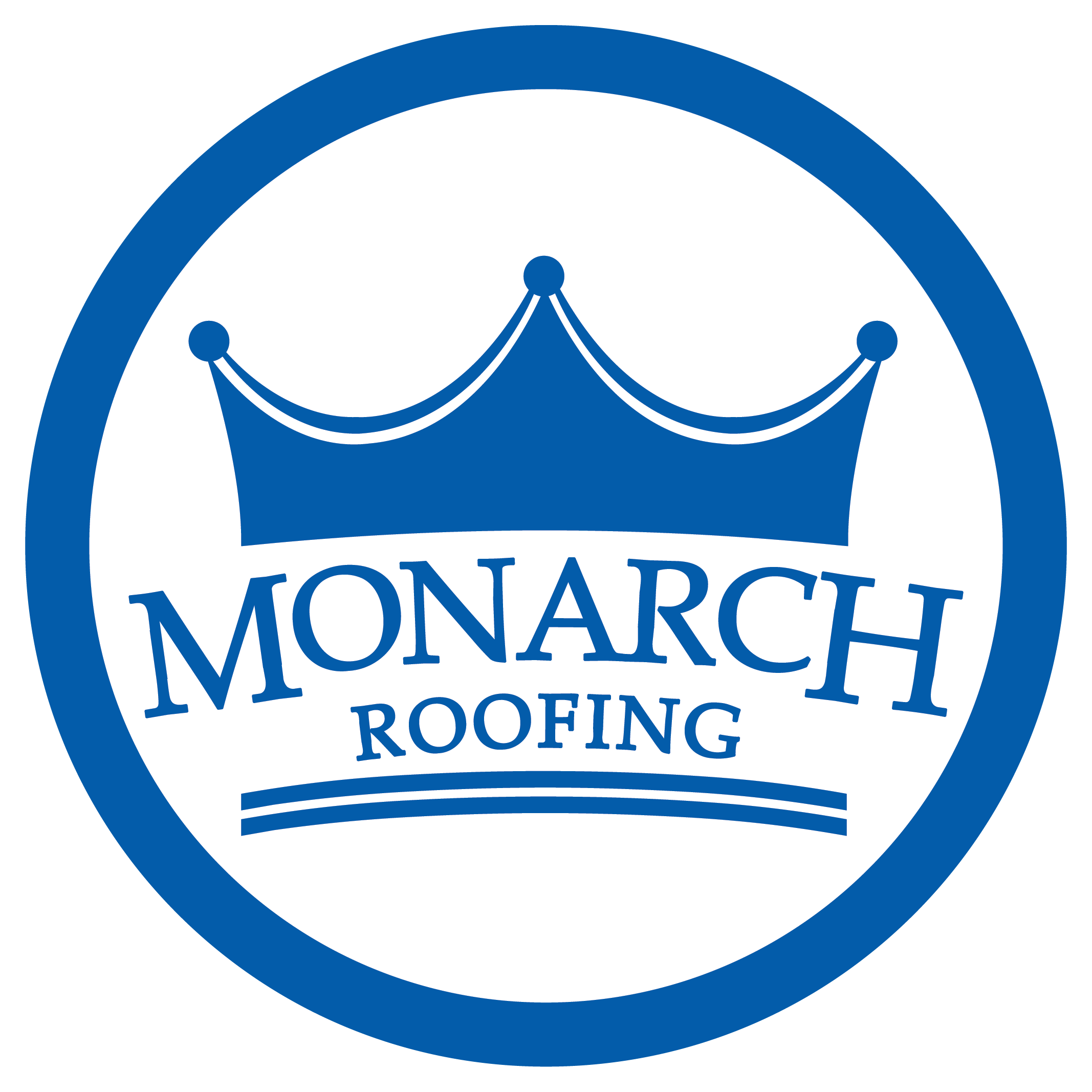In the realm of home improvement, few aspects are as crucial yet often overlooked as roof insulation. Whether you reside in a frigid northern climate or a scorching southern region, proper insulation can significantly impact your comfort, energy bills, and even the longevity of your home.
In this blog, we’ll explain:
- The importance of roof insulation
- Signs indicating poor insulation
- Various types of insulation
- The costs involved in upgrading your roof insulation
Importance of Roof Insulation

Imagine your home as a well-sealed cocoon protecting you from the elements. Now, picture the insulation as the cozy blanket within that cocoon, regulating the temperature and keeping you comfortable year-round. Roof insulation plays a pivotal role in maintaining a consistent indoor climate, regardless of external weather conditions. Here’s why it’s so crucial:
- Energy Efficiency: Properly insulated roofs help in maintaining stable indoor temperatures, reducing the strain on heating and cooling systems. By minimizing heat transfer through the roof, insulation can lead to substantial energy savings and lower utility bills.
- Comfort: Adequate insulation ensures a comfortable living environment by preventing heat loss in the winter and heat gain in the summer. This translates to consistent temperatures throughout your home, eliminating hot spots and cold drafts.
- Moisture Control: In addition to regulating temperature, insulation acts as a barrier against moisture infiltration. Moisture accumulation in the attic can lead to mold growth, structural damage, and compromised indoor air quality. Proper insulation helps mitigate these risks by keeping the attic dry.
- Noise Reduction: Insulation not only blocks heat transfer but also serves as a sound barrier. This is particularly beneficial if your home is situated in a noisy neighborhood or near a busy road, as it can help minimize external noise pollution.
Signs of Poor Roof Insulation
Identifying whether your home suffers from inadequate roof insulation is the first step towards rectifying the issue. Here are some common signs to watch out for:
- Fluctuating Temperatures: Do you notice drastic temperature variations between different areas of your home? Uneven heating or cooling could indicate insufficient insulation, allowing heat to escape or infiltrate through the roof.
- High Energy Bills: If your heating and cooling costs seem exorbitant compared to similar-sized homes in your area, poor insulation could be to blame. Escaping heat in the winter or penetrating sunlight in the summer forces your HVAC system to work harder, driving up energy expenses.
- Ice Dams: In colder climates, ice dams—ridges of ice that form along the roof’s edge—can signal insulation problems. These dams result from heat escaping through the roof, causing snow to melt and refreeze at the eaves, potentially leading to water damage.
- Drafts and Cold Spots: Drafts or chilly areas in certain rooms, especially those located directly beneath the attic, indicate insufficient insulation. These cold spots occur when warm air rises and escapes through gaps in the insulation, leaving specific areas cooler than the rest of the house.
4 Types of Roof Insulation
When it comes to insulating your roof, you’ll encounter various materials and methods, each with its own set of advantages and drawbacks. Here’s an overview of the most common types of roof insulation:
1) Fiberglass Insulation:
Fiberglass insulation consists of fine glass fibers bound together to form batts or rolls. It’s widely available and relatively affordable.
✅ Pros:
- Excellent thermal performance
- Fire-resistant
- Easy to install, especially in standard attic spaces
❌ Cons:
- Prone to moisture absorption if not properly sealed
- Can irritate skin and respiratory system during installation
- Requires protective gear for handling due to glass fibers
2) Cellulose Insulation:
Cellulose insulation is made from recycled paper treated with fire-retardant chemicals. It’s environmentally friendly and offers effective thermal performance.
✅ Pros:
- Made from recycled materials, reducing environmental impact
- Provides good resistance to airflow
- Offers better soundproofing compared to fiberglass
❌ Cons:
- Susceptible to settling over time, reducing effectiveness
- Can be messy to install
- Requires proper moisture barriers to prevent mold growth
3) Spray Foam Insulation:
Spray foam insulation is composed of polyurethane foam applied as a liquid that expands and hardens into a solid foam.
✅ Pros:
- Superior insulating properties and air sealing capabilities
- Adheres to irregular surfaces, creating a seamless barrier
- Resistant to moisture and mold growth
❌ Cons:
- Requires professional installation due to specialized equipment
- Expensive upfront cost compared to other options
- Improper application can lead to off-gassing of harmful chemicals
4) Reflective Insulation:
Reflective insulation consists of a reflective surface (such as aluminum foil) applied to a substrate material like foam board or bubble wrap.
✅ Pros:
- Reflects radiant heat, reducing heat transfer through the roof
- Lightweight and easy to install
- Can supplement other types of insulation for added thermal resistance
❌ Cons:
- Less effective in colder climates where conductive heat transfer is predominant
- Relies on proper air sealing for optimal performance
- Vulnerable to dust accumulation, reducing reflectivity over time
Cost of Adding Roof Insulation

The cost of adding or upgrading roof insulation can vary depending on factors such as the insulation material, the size and complexity of your roof, and labor costs in your area. Here’s a general overview of the expenses involved:
Material Costs
The price of insulation materials typically ranges from $0.50 to $3.00 per square foot, depending on the type and quality. Fiberglass insulation tends to be more affordable, while spray foam insulation commands a higher price due to its superior performance.
Labor Costs
Hiring a professional contractor to install roof insulation will incur labor charges, which can vary based on the complexity of the job and local market rates. On average, labor costs can range from $1.00 to $3.00 per square foot.
Additional Expenses
Depending on your home’s configuration, additional expenses may include air sealing, moisture barriers, and ventilation upgrades to ensure optimal insulation performance. These ancillary costs should be factored into your overall budget.
Return on Investment
While the upfront costs of roof insulation may seem significant, the long-term benefits in terms of energy savings and increased home comfort can outweigh the initial investment. Many homeowners recoup their expenses through lower utility bills over time.
Attic Insulation Made Simple
Roof insulation is not just about staying warm in the winter and cool in the summer—it’s a fundamental aspect of home comfort, energy efficiency, and structural integrity. By understanding the importance of insulation, recognizing signs of poor insulation, and exploring different insulation options, you can make informed decisions to improve your home’s thermal performance.
While the cost of adding roof insulation may seem daunting, the long-term savings and benefits make it a worthwhile investment in your home’s future. So, whether you’re battling the winter chill or seeking refuge from the summer heat, don’t overlook the power of a well-insulated roof to transform your living space into a haven of comfort and sustainability.
Ready to protect your home? Contact Monarch Roofing today to get started!





